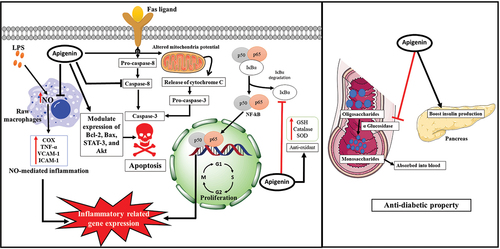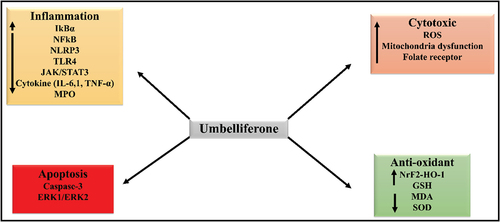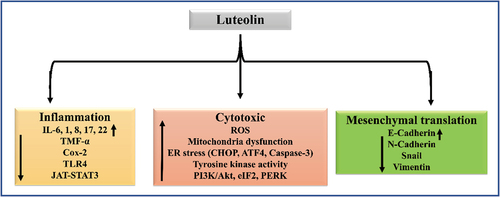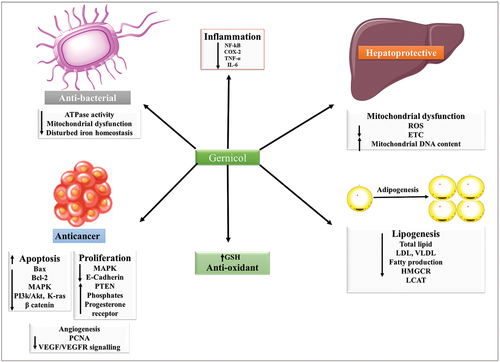Figures & data
Table 1. Various bioactive chemical constituents of Matricaria chamomile.
Figure 2. Illustration of mechanism(s) of apigenin for its therapeutic potential.

Figure 4. Representation of different biological activity and its associated molecular pathways of umbelliferone.

Figure 6. Representation of different biological activity and its associated molecular pathways of Luteolin.

Table 2. Minimum inhibitory concentration (MIC) of Chamomile extract.
Table 3. Various studies with different extract of Matricaria chamomilla and their beneficial outcomes.




